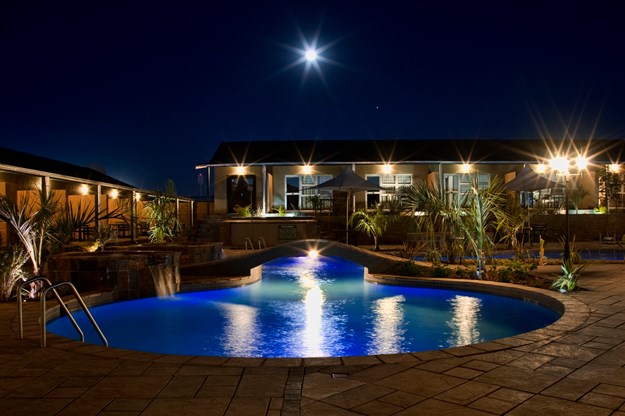
Top stories



The route from Cape Town to Windhoek, Namibia, along the scenic West Coast, is filled with quaint towns, amazing landscapes and exciting activities. It’s the perfect route for a leisurely road trip, so make sure you set aside at least six or seven days to really take it all in.
According to Robert Nienaber of Cape Town City Accommodation “4x4-ing is the best way to undertake the trip, if you don’t want to miss out on anything along the way.” For tourists who have flown into Cape Town and will be hiring a reliable and sufficiently rugged vehicle for their journey, he advises that you take “plenty of water, a comprehensive medical kit, cellphone and camera chargers suitable for the car, a map/GPS device and a list of emergency contact details - just in case”.

Heading along the R27, you’ll hit the West Coast National Park, with its herds of eland, kudu, gemsbok, mountain zebra, duiker, ostriches and more in the Postberg section. If you’re visiting between August and October, the famous spring flowers rarely fail to delight. If those don’t satisfy, about 600km into your journey is Namaqualand in the Northern Cape, which forms part of the only ‘arid hotspot’ in the world and showcases the richest, most succulent flora on Earth. Those who fly fish or mountain bike may like to extend their stay in the Richtersveld National Park.
The Orange River appears about 800km into the journey – it’s the longest river in SA at 2200km and forms an international border between SA and Namibia. This adventure wonderland offers white-river rafting for the brave and, for ornithologists, over 142 species of birds to spot.
A trip to Namibia isn’t complete without a visit to the Fish River Canyon, the second largest in the world after the Grand Canyon. Stay overnight at Ai-Ais Hot Springs, where the water can reach 60C (closed from November to mid-March).

From there, take a detour to Kolmanskop, a ghost town 10km from the port town of Lüderitz. Take a guided tour and visit traditional German houses being reclaimed by the sand. Stay overnight at Klein-Aus Vista in Gondwana, where you can see wild horses at the waterhole before relaxing with a sundowner or two.
The following day, take a five-hour drive to Sossusvlei, a spectacular site with red sand dunes and a white salt pan. Nearby is the Sesriem Canyon, with sedimentary rock a kilometre in length and 30 metres deep. From there, jump back in your car and drive to Duwisib Castle, a medieval-looking fortress. Overnight at Duwisib Guest Farm.
Wake up early for your drive to Keetmanshoop. About 13km past the town, stop off at the Quivertree Forest. Not actually a tree, these ‘kokerbooms’ are in fact aloe plants, characteristic of the dry, arid parts of Namibia. Nearby, you’ll find Giant’s Playground, home to strange dolerite boulder formations and mazes. Explore here for a few hours – the area makes for interesting hiking. This side of the highway also lays claim to the Kalahari Desert, home to hyena, lion, meerkat, giraffe, antelope and more in the national parks.
Your last stop, about 90km before Windhoek, needs to be Lake Oanob Resort. Partake in game drives, boat rides, canoeing, swimming or simply unwind at the bar …

Once you finally arrive in Windhoek, be sure to check out the family-friendly Arebbusch Travel Lodge, surrounded by beautiful gardens and nestled on the banks of a river, yet conveniently close to the city centre. Its self-catering options are just the ticket for those on a long-distance driving holiday from the Cape. When venturing out, a walking tour is a great way to orientate yourself. Windhoek also offers township tours, horse riding, game drives, an array of coffee shops and restaurants (including a wine bar), hot-air ballooning and skydiving. If you’re a fan of trains, don’t miss the Trans-Namib Train Museum.

If you’re not in a rush, no visit to Namibia is complete without factoring in other major attractions such as Swakopmund, Etosha or Erindi Game Reserves, Skeleton Coast and Damaraland, a conservation area that supports populations of rare desert-adapted elephants. And for the adventurous, push through to the north, up to Caprivi – the Chobe and Zambezi rivers are magnificent – and right up to Victoria Falls. You may even fit in a bungee jump!
Images supplied by Vanessa Rogers